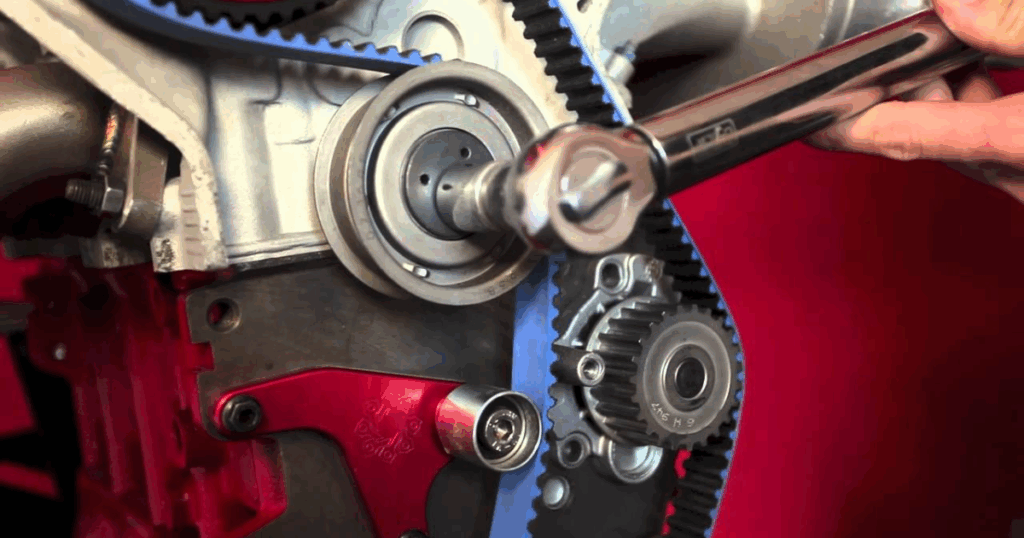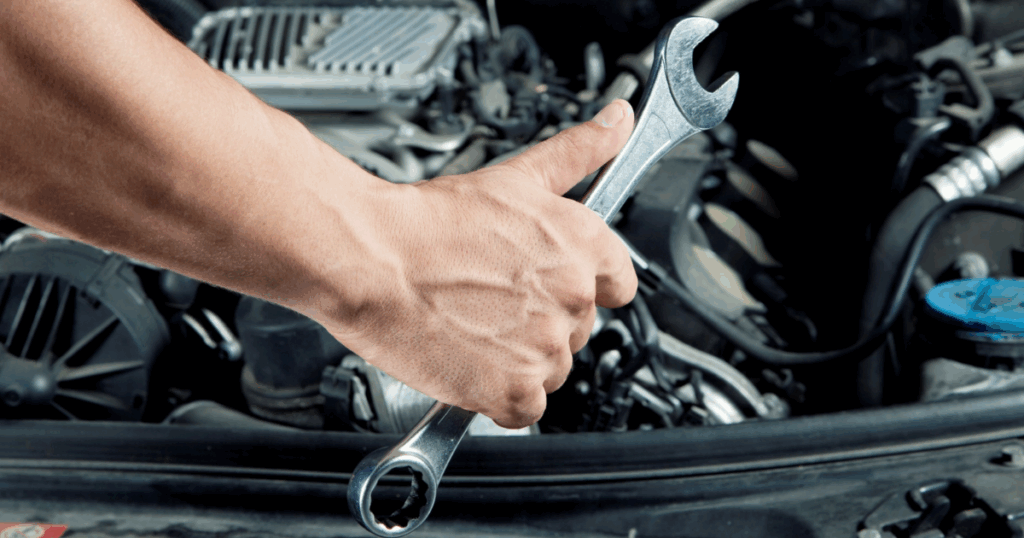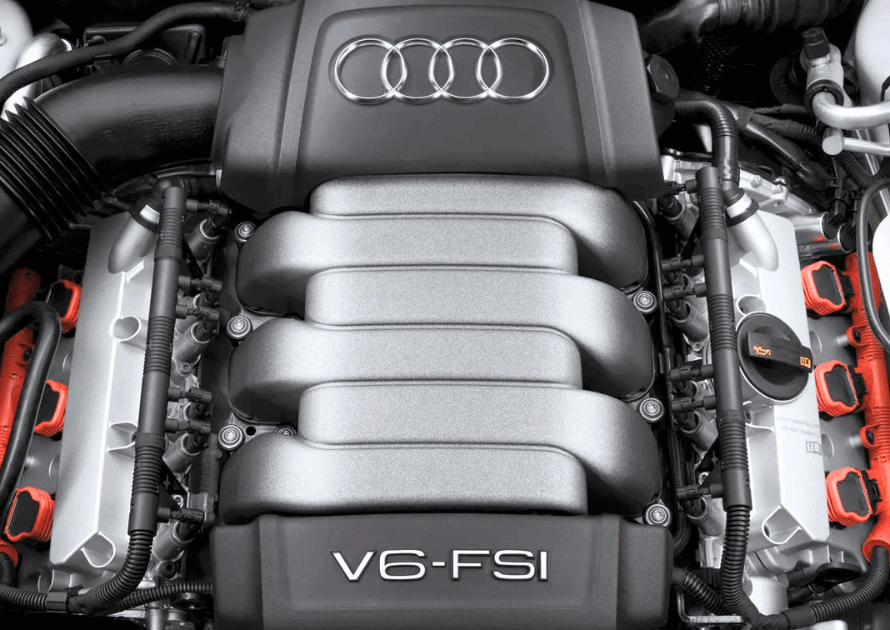A timing belt is a crucial part of your car’s engine that synchronizes the rotation of the crankshaft and camshaft. This ensures the engine’s valves open and close at the right time during each cylinder’s intake and exhaust strokes. Without a properly functioning timing belt, your engine could suffer severe damage, leading to expensive repairs.
Most modern vehicles rely on timing belts for smooth engine performance. Unlike timing chains, which are made of metal, timing belts are constructed from reinforced rubber and can wear out over time.
Regular inspection and replacement are necessary to prevent unexpected breakdowns. Knowing when to replace your timing belt can save you from costly engine repairs. For timing belt replacements in Dubai Protone Auto Care in Al Quoz 3, Dubai best workshop.
Importance of Timing Belt Maintenance
The timing belt plays a vital role in keeping your engine running smoothly. If it fails, the engine’s pistons and valves can collide, causing catastrophic damage. This is why manufacturers recommend replacing the timing belt at specific intervals, usually between 60,000 to 100,000 miles, depending on the vehicle model.
Ignoring timing belt maintenance can lead to engine failure, leaving you stranded and facing hefty repair bills. Regular checks by a professional mechanic can help detect early signs of wear. Investing in timely replacements ensures your car remains reliable and avoids unnecessary engine damage.
Signs Your Timing Belt Needs Replacement
Several symptoms indicate a worn-out timing belt. One common sign is a ticking noise coming from the engine, which suggests the belt is loose or damaged. Another warning is engine misfires, where the engine struggles to run smoothly due to improper valve timing.
Other signs include:
- Difficulty starting the engine
- Oil leaks near the timing belt cover
- Visible cracks or fraying on the belt
- Engine stalling or backfiring
If you notice any of these symptoms, it’s best to get your timing belt inspected immediately to avoid further damage.
How Often Should You Replace the Timing Belt?
Most car manufacturers recommend replacing the timing belt every 60,000 to 100,000 miles. However, this can vary based on your vehicle’s make and model. Consulting your owner’s manual will provide the exact replacement interval for your car.
In some cases, environmental factors like extreme heat or frequent stop-and-go driving can accelerate wear. If you’re unsure, a professional mechanic can assess the belt’s condition and advise whether a replacement is needed.
You can also learn about Cars Engine Misfires Causes, Symptoms, and Solutions
Difference Between Timing Belts and Timing Chains
Timing belts and timing chains serve the same purpose but are made of different materials. Timing belts are made of rubber with fiber reinforcement, while timing chains are constructed from metal. Chains are generally more durable but can be noisier and require lubrication.
Belts are quieter and cheaper to replace but need more frequent maintenance. Some modern vehicles use timing chains designed to last the lifetime of the engine, whereas belts must be replaced periodically. Knowing which one your car has will help you plan maintenance accordingly.
What Happens If a Timing Belt Breaks?
A broken timing belt can cause severe engine damage, especially in interference engines. When the belt snaps, the camshaft stops turning, but the pistons continue moving, potentially hitting the valves. This can bend valves, damage pistons, and even crack the cylinder head.
In non-interference engines, a broken belt may not cause internal damage, but the car will stop running immediately. Either way, a snapped timing belt means costly repairs, so timely replacement is essential.
Tips for Timing Belt Maintenance
- Always follow the manufacturer’s replacement schedule
- Listen for unusual engine noises
- Check for oil leaks near the belt
- Replace related components (water pump, tensioners) at the same time
Preventive care is the best way to avoid costly repairs. Don’t wait until it’s too late!
Timing Belt Replacement Process
Replacing a timing belt is a complex task best left to professionals. The process involves removing several engine components, including the serpentine belt, crankshaft pulley, and timing cover. The old belt is then taken off, and the new one is aligned precisely with the engine’s timing marks.
After installation, the mechanic checks the tension and ensures proper alignment. Some vehicles also require replacing the water pump and tensioner during this service. A properly installed timing belt ensures smooth engine operation and prevents future issues.

Cost of Timing Belt Replacement
The cost of replacing a timing belt varies depending on the car model and labor charges. On average, the replacement can cost between $300 to $1,000, including parts and labor. Luxury or high-performance vehicles may have higher costs due to complex engine designs.
Factors affecting the cost:
- Vehicle make and model
- Labor charges at the repair shop
- Additional parts like water pump or tensioner
- Location (urban areas may have higher prices)
Getting quotes from multiple mechanics can help you find the best deal.
What Happens If the Timing Belt Breaks?
A broken timing belt can cause severe engine damage, especially in interference engines. The pistons may hit the valves, bending them or damaging the cylinder head. In worst cases, the engine may need a complete rebuild or replacement. Repair costs can run into thousands of dollars.
Non-interference engines are safer but will still leave you stranded. The engine will shut off immediately, requiring a tow. If you hear a loud snap while driving, pull over safely and call for assistance. Never attempt to restart the engine it could worsen the damage.
Common Mistakes During Timing Belt Replacement
One common mistake is not replacing the tensioner and idler pulleys along with the belt. These components wear out over time and can cause premature belt failure if not changed. Another error is improper belt alignment, leading to engine misfires or damage.
Other mistakes include:
- Ignoring the water pump replacement
- Overtightening or under-tightening the belt
- Not following manufacturer torque specifications
- Skipping a post-installation inspection
Avoiding these errors ensures a long-lasting and reliable timing belt replacement.
Benefits of Replacing the Timing Belt on Time
Timely replacement prevents sudden breakdowns and costly engine repairs. A new timing belt ensures optimal engine performance, fuel efficiency, and smooth operation. It also reduces the risk of being stranded due to belt failure.
Additionally, replacing the belt as per the manufacturer’s schedule maintains your car’s resale value. Buyers prefer vehicles with up-to-date maintenance records, making your car more attractive in the used market.
How to Choose the Right Timing Belt?
Always use high-quality OEM (Original Equipment Manufacturer) or reputable aftermarket belts. Cheap, low-quality belts may wear out faster and fail prematurely. Checking customer reviews and consulting your mechanic can help you choose the best option.
Consider these factors:
- Compatibility with your car model
- Material durability
- Brand reputation
- Warranty coverage
Investing in a reliable timing belt ensures long-term performance and safety.
Components to Replace with the Timing Belt
When replacing the timing belt, it’s wise to change other related parts to avoid future issues. The water pump, tensioner, and idler pulleys should be inspected and replaced if necessary. This prevents multiple disassemblies and saves on labor costs.
Other parts to consider:
- Camshaft and crankshaft seals
- Serpentine belt
- Thermostat
- Coolant (if the water pump is replaced)
Replacing these components together ensures a complete and efficient service.
How to Extend the Life of Your Cars Timing Belt?
While timing belts have a fixed lifespan, proper maintenance can help them last longer. Avoiding extreme driving conditions, such as excessive heat or cold, reduces wear. Regular engine check-ups also help detect early signs of belt damage.
Tips to prolong belt life:
- Follow the manufacturer’s service schedule
- Fix oil leaks promptly (oil weakens rubber belts)
- Avoid aggressive driving
- Keep the engine clean and well-maintained
Taking these steps can help delay premature belt failure.
Choose a Reliable Auto Repair Shop
Look for certified mechanics with experience in timing belt replacements. Check online reviews and ask for recommendations. A trustworthy shop will provide a clear estimate and warranty on parts and labor. Avoid shops that offer suspiciously low prices they may cut corners.
Proton Auto Care in Al Quoz 3, Dubai, is a trusted choice for timing belt replacements. Their skilled technicians use high-quality parts and follow manufacturer guidelines. Always choose a reputable shop to ensure your car’s longevity.

Cars Timing Belt Replacement Costs
Cars Timing Belt Replacement Costs can vary based on the make and model of the vehicle, but generally range from AED 800 to AED 2,500 in Dubai. The timing belt is a crucial part of the engine that keeps the crankshaft and camshaft in sync.
If it fails, it can cause severe engine damage, leading to even more expensive repairs. It’s recommended to replace it every 60,000 to 100,000 kilometers. For affordable and reliable service, Protone Auto Care in Al Quoz 3, Dubai, offers expert timing belt replacements. Getting it done on time ensures your engine runs smoothly and safely.
Frequently Asked Questions
How do I know if my timing belt is failing?
Look for symptoms like engine misfires, unusual noises, difficulty starting, or visible belt wear. If in doubt, have a mechanic inspect it.
Can I drive with a worn timing belt?
It’s risky. A failing belt can snap anytime, causing severe engine damage. Replace it as soon as possible.
What happens if I don’t replace the timing belt?
The belt can break, leading to engine failure. Repair costs will be much higher than a simple belt replacement.
Does the water pump need replacement with the timing belt?
Yes, it’s recommended since both are accessed during the same service, saving labor costs.
Conclusion
Timing belt replacement is a critical maintenance task that ensures your engine runs smoothly and avoids costly damage. Recognizing the signs of wear, following the recommended replacement intervals, and choosing a reliable mechanic are key steps in maintaining your vehicle.
Proton Auto Care in Al Quoz 3, Dubai, offers professional timing belt replacement services using high-quality parts and expert techniques. Don’t wait until it’s too late schedule an inspection today to keep your car running safely and efficiently.


